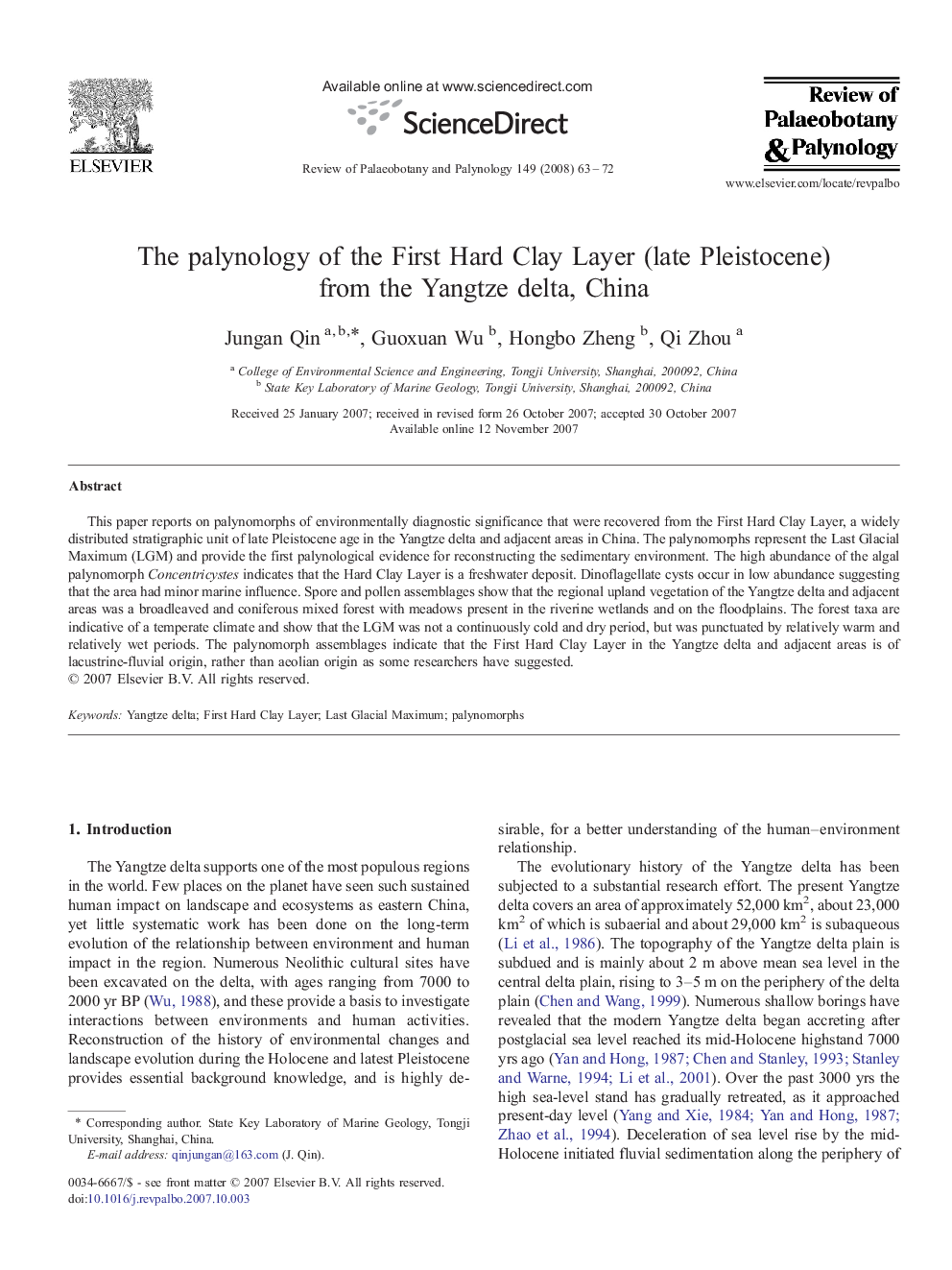| Article ID | Journal | Published Year | Pages | File Type |
|---|---|---|---|---|
| 4750920 | Review of Palaeobotany and Palynology | 2008 | 10 Pages |
This paper reports on palynomorphs of environmentally diagnostic significance that were recovered from the First Hard Clay Layer, a widely distributed stratigraphic unit of late Pleistocene age in the Yangtze delta and adjacent areas in China. The palynomorphs represent the Last Glacial Maximum (LGM) and provide the first palynological evidence for reconstructing the sedimentary environment. The high abundance of the algal palynomorph Concentricystes indicates that the Hard Clay Layer is a freshwater deposit. Dinoflagellate cysts occur in low abundance suggesting that the area had minor marine influence. Spore and pollen assemblages show that the regional upland vegetation of the Yangtze delta and adjacent areas was a broadleaved and coniferous mixed forest with meadows present in the riverine wetlands and on the floodplains. The forest taxa are indicative of a temperate climate and show that the LGM was not a continuously cold and dry period, but was punctuated by relatively warm and relatively wet periods. The palynomorph assemblages indicate that the First Hard Clay Layer in the Yangtze delta and adjacent areas is of lacustrine-fluvial origin, rather than aeolian origin as some researchers have suggested.
